 96
96 This is basically the other answer reworded...
In this virtual experiment, I bred “pure” mice with known genotypes that exhibited specific fur and eye colors (black fur with black eyes, black fur with red eyes, white fur with black eyes, white fur with red eyes). The purpose of this was to learn how traits are passed on via dominant and recessive genes. Before starting, my hypothesis was that some mice would have recessive genes passed on to them.
I bred two mice during each round, both with different genotypes. During this experiment, I learned that two organisms, such as mice, can look similar or the same while having different genotypes. For example, both mice will appear to have black fur and black eyes. Yet, their genotypes are BbEe (the capital letters stand for black fur; the lowercase letters stand for white fur). Hence, it is possible for their litter’s traits to vary.
In one round, I also learned that there can be equal (or approximately equal) possibilities for each mouse in the litter to have specific traits. At one point, I bred a mouse with white fur and red eyes (bbee) with a mouse with black fur and black eyes (BbEe). The predicted fraction for each genotype in the litter was 4/16 for each. Meaning that there is a 25% chance for each genotype, if you were to convert the fractions to percentages.
(photo of table below)
Another way to test my hypothesis would be to have mice stored in cages for future breeding. And each time they were bred, I could report the statistics of fur and eye color. As I later learned, my hypothesis was not correct. I was wrong because there were a variety of genes passed on, both dominant and recessive. In conclusion, there are wide possibilities when breeding mice whom carry both dominant and recessive traits.
I hope this helps!! :D

 96
96 This is basically the other answer reworded...
In this virtual experiment, I bred “pure” mice with known genotypes that exhibited specific fur and eye colors (black fur with black eyes, black fur with red eyes, white fur with black eyes, white fur with red eyes). The purpose of this was to learn how traits are passed on via dominant and recessive genes. Before starting, my hypothesis was that some mice would have recessive genes passed on to them.
I bred two mice during each round, both with different genotypes. During this experiment, I learned that two organisms, such as mice, can look similar or the same while having different genotypes. For example, both mice will appear to have black fur and black eyes. Yet, their genotypes are BbEe (the capital letters stand for black fur; the lowercase letters stand for white fur). Hence, it is possible for their litter’s traits to vary.
In one round, I also learned that there can be equal (or approximately equal) possibilities for each mouse in the litter to have specific traits. At one point, I bred a mouse with white fur and red eyes (bbee) with a mouse with black fur and black eyes (BbEe). The predicted fraction for each genotype in the litter was 4/16 for each. Meaning that there is a 25% chance for each genotype, if you were to convert the fractions to percentages.
(photo of table below)
Another way to test my hypothesis would be to have mice stored in cages for future breeding. And each time they were bred, I could report the statistics of fur and eye color. As I later learned, my hypothesis was not correct. I was wrong because there were a variety of genes passed on, both dominant and recessive. In conclusion, there are wide possibilities when breeding mice whom carry both dominant and recessive traits.
I hope this helps!! :D

 1
1  1
1  6
6 c
Explanation:
Incomplete dominance is when a dominant allele, does not completely mask the effects of a recessive allele, and the organism's resulting physical appearance shows a blending of both alleles.
if a gray mouse has a Bb genotype (B black, b white) and the two mice produce black/white offspring they would have either gotten two B alleles or two b alleles.
 6
6 c
Explanation:
Incomplete dominance is when a dominant allele, does not completely mask the effects of a recessive allele, and the organism's resulting physical appearance shows a blending of both alleles.
if a gray mouse has a Bb genotype (B black, b white) and the two mice produce black/white offspring they would have either gotten two B alleles or two b alleles.
Option A : the fern transitined from gametophyte generation to sporophyte generation.
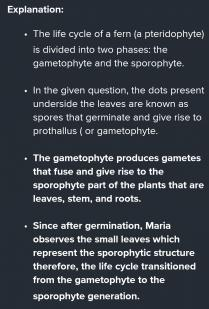
A spring is a natural discharge point of subterranean water at the surface of the ground or directly into the bed of a stream, lake, or sea. Water that emerges at the surface without a perceptible current is called a seep. Wells are holes excavated to bring water and other underground fluids to the surface.
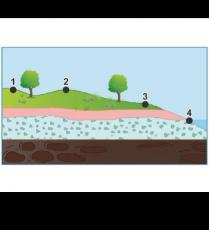
The image shows a cross-section of land scape.
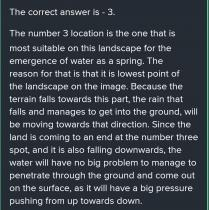
Answer : 900 kg pumpkins
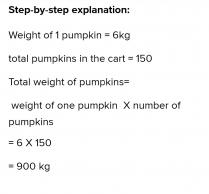
A scientist look for in a plant that would identify it as a club moss rather than a liverwort.
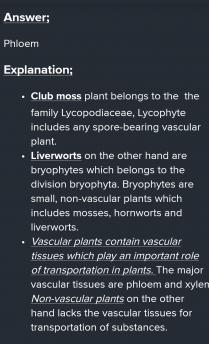

It will provide an instant answer!
